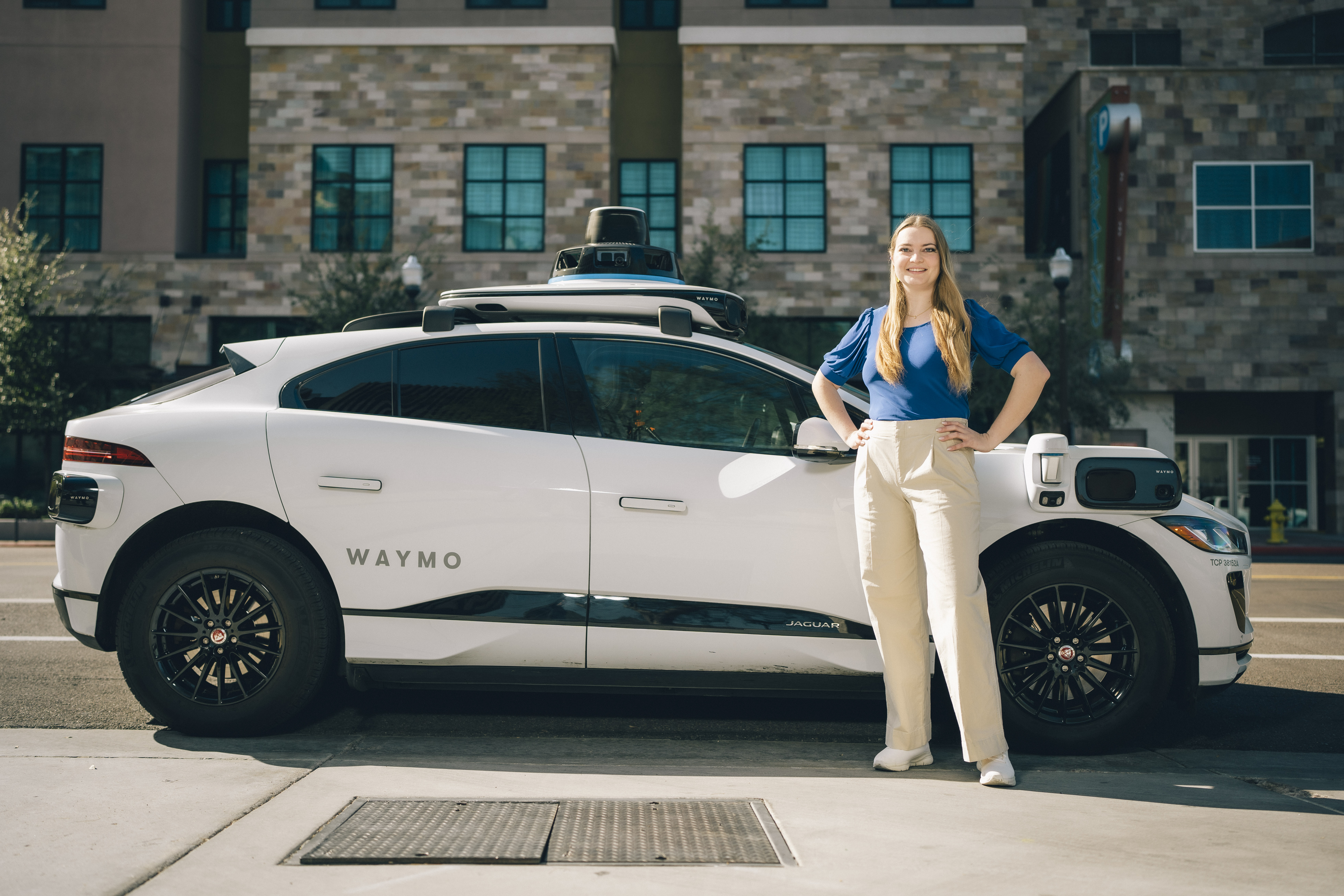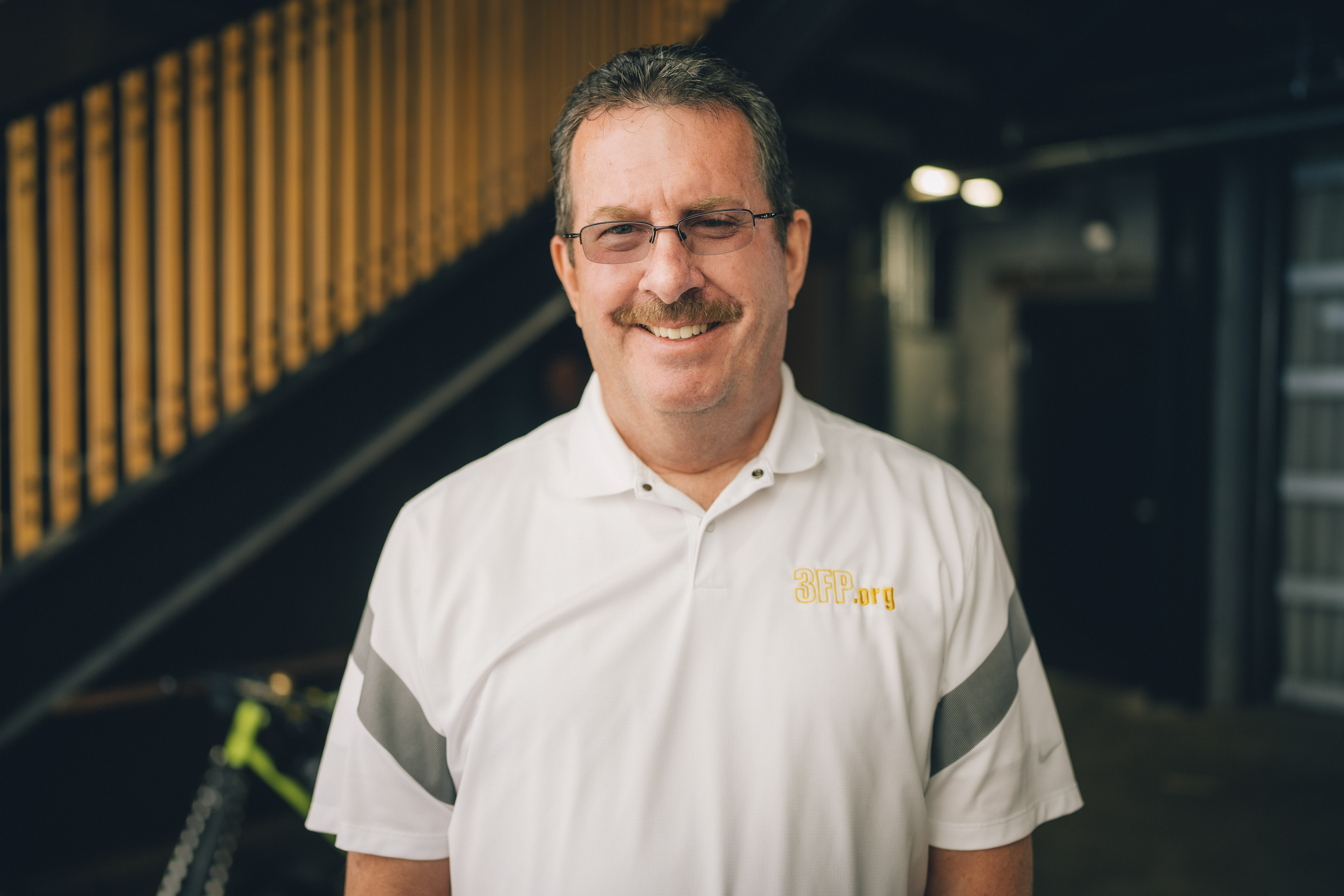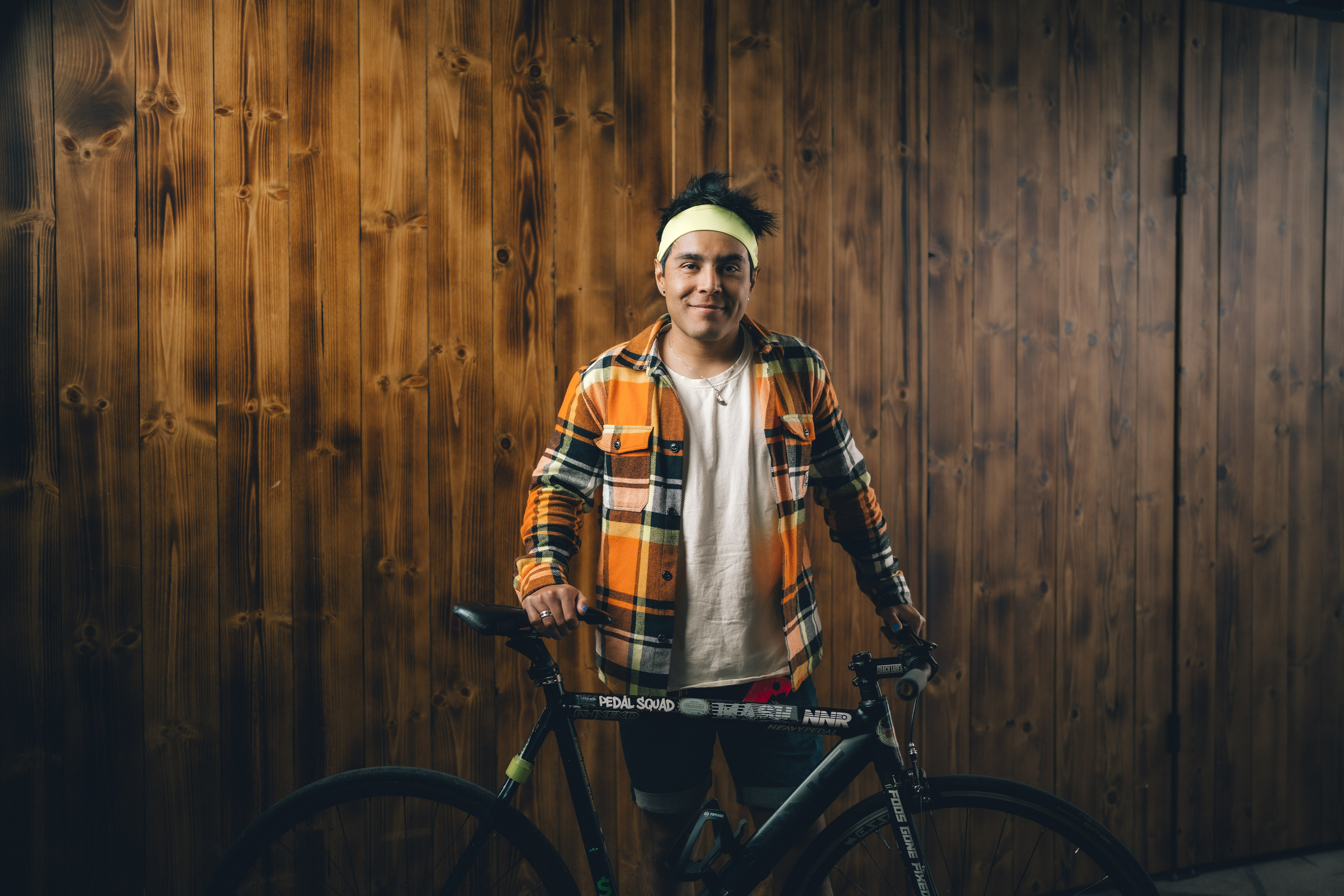Sharing The Road to a Safer Future: Waymo and Cyclists Merge Pedal Power, Engineering Talent to Raise Awareness
Play VideoRead
Phoenix Cyclist Safety
Many types of people travel on America's roadways to get from point A to Point B: drivers, passengers, bicycle riders, motorcyclists, scooter riders, pedestrians, and more. For that reason, from the early days of Waymo's mission to build a safe, reliable autonomous driving technology, its engineers have always considered the safety of road users outside the vehicle just as much as those inside it.
In fact, that's Anne Dorsey's main job at Waymo.

Anne Dorsey, senior motion-planning engineer at Waymo
One spring day in Phoenix, the senior motion-planning engineer stood before a group of cyclists about to embark on a ride. The ride, which would follow a 12-mile route between Tempe and Phoenix, was organized and hosted by Waymo, together with cycling safety advocacy organizations 3 Feet Please and Tempe Bicycle Action Group to demonstrate how Waymo’s technology, called the Waymo Driver, accounts for cyclist safety.
“Cycling and cyclist safety are both things that are really close to my heart,” said Anne, addressing the crowd. Anne was preparing to ride with Phoenix-area cycling safety advocates inside a Waymo vehicle while more than two dozen cyclists, including one child, followed a similar route alongside the vehicle.
In her role at Waymo, Anne focuses on how the company’s technology interacts with vulnerable road users (VRUs), which can include any road user not in a vehicle, such as pedestrians, cyclists, motorcyclists, people on scooters, skateboards and horseback riders.
Every year according to the US Centers for Disease Control, 1,000 cyclists are killed and 130,000 are injured on US roads. Even as the number of cyclists in the US increases, the cyclist safety crisis is being intensified by an ongoing epidemic of speeding and unsafe decision-making by drivers that is putting all US road users at grave risk. In contrast, the Waymo Driver is designed to obey road rules like speed limits, always be vigilant, and make considerate and defensive driving decisions that proactively maximize safety for all road users.
When the cyclists started their ride, Anne rode inside the Waymo vehicle with David Waechter, executive director of 3 Feet Please, a national campaign with a mission to educate people about the laws in each state that are required when vehicles or other motorized vehicles pass cyclists or other vulnerable road users.

David Waechter, executive director of 3 Feet Please
David joined the 3 Feet Please mission after he and his daughter and their close friend Lynn were all hit by a driver who was trying to pass them while they were all cycling together. David and his daughter survived. Lynn did not. David then discovered - and went on to lead – 3 Feet Please and its work to prevent tragedies like the one that took his friend.
As David rode in the Waymo vehicle with Anne, he observed the Waymo Driver cautiously pass the group of cyclists by moving into the far lane and giving them much more space than the required three feet of passing distance.

Waymo sharing the road with cyclists in Tempe, AZ
“This is exactly what I want,” David noted. “This is exactly what people should do when they see cyclists.”
To identify and differentiate cyclists and other road users, the Waymo Driver is equipped with an advanced vision system, which includes radar, lidar and cameras, that help it see in 360 degrees, up to three football fields away in total light or darkness. It is paired with an artificial intelligence system that is designed to make decisions to maximize safety of everyone on the road.
David said he was impressed by how the screen in the passenger area enabled him to see the cyclists on a real-time journey map, and how audio cues informed him of when the car was taking an alternate route to avoid cyclists.
“I was overwhelmed by the amount of detail the car can pick up on… being able to see the individual riders and the drivers and then to watch the vehicle make decisions, that was cool,” David said. “That's what we need to see.”
I was overwhelmed by the amount of detail the car can pick up on… being able to see the individual riders and the drivers and then to watch the vehicle make decisions, that was cool. That's what we need to see.
Anne underscored that engineers design the Waymo Driver to differentiate different types of road users, whether they are on-road or off-road.
“If they're wearing a lot of high vis and a hard hat, we might tell that they're a construction worker,” Anne explained. “We can tell if someone is a cyclist and all of that information can help us make decisions that are safer given the context around that person.”
Waymo later provided free autonomous rides around downtown to some of the cyclists so that they could experience the technology for themselves.
Steven Gerner, president of Tempe Bicycle Action Group, an advocacy organization promoting safer cycling in the Tempe area, said he was not sure at all what to expect when he showed up to cycle with the group, but was impressed by Waymo’s technology.
“When you see the vehicle operate, it is seamless, it is perfect, you feel so safe,” Steven said. “It’s so cautious around everyone - pedestrians, drivers.”
Stevie Milne, former president of Tempe Bicycle Action Group, also had a chance to ride inside a Waymo vehicle. She said she appreciates how the Waymo Driver is designed to drive with extreme caution near cyclists and identify all the things that might happen when people are biking.
Cyclists have different levels of experience and all behave differently. When they’re on the road, they may make unexpected movements, spread out across a lane, suddenly fall down, or hit an obstruction and be thrown from their bikes. The Waymo Driver is designed to identify and safely react to these scenarios and more.
“We had a lot of examples today of Waymo giving us the space that we needed,” Stevie said, adding that she loves how Waymo’s technology is designed to recognize cyclists and differentiate them from other road users. “If every road was filled with Waymo cars [...] we would be in a safer position as pedestrians, as cyclists.”
We had a lot of examples today of Waymo giving us the space that we needed. If every road was filled with Waymo cars [...] we would be in a safer position as pedestrians, as cyclists.
Becket Aguilar, another local cyclist who biked with the group, said he was amazed to learn that the Waymo Driver is designed with “anti-dooring” features.

Becket Aguilar, cyclist
“Dooring” is the term used for incidents when cyclists are injured or killed when car drivers and passengers thrust open car doors and suddenly obstruct another road user’s path because they did not check the road prior to opening their door.
Waymo provides its passengers with a verbal cue, as well as a visual cue on the passenger screen, when a cyclist is approaching or riding near the parked or stationary Waymo vehicle.
“Not having to worry about a door being opened on you was the coolest thing ever,” Becket emphasized.
Anne said that Waymo’s anti-dooring and cyclist safety features are part of a safety-centered approach to design in which Waymo engineers bring their own lived experiences as road users.
“In addition to being Waymo employees, all of us are also pedestrians, cyclists, motorcyclists,” Anne explained, adding that Waymo has an interest group for avid cyclists. “That's one group that we've collaborated with to make sure that we have the full picture of what the cycling experience is like in different locations.”
Steven said that although his family has had negative experiences with cars in the past, this ride gave him hope for the future of cyclist-vehicle interactions.
“Knowing that we can have safer cars and safer vehicles out there is a huge relief,” Steven said. “It's something we're really excited about.”
David emphasized that the technology could help prevent crashes like the one that took his friend’s life.
“I know that from what I've experienced with Waymo that if the technology had been in the car that hit us, then I wouldn't be in this role today.”
David recounted how his opinion of Waymo’s autonomous driving technology has evolved.
“I came at it as a bit of a skeptic,” said David. “I am a complete convert now. I think this technology is fantastic.”


